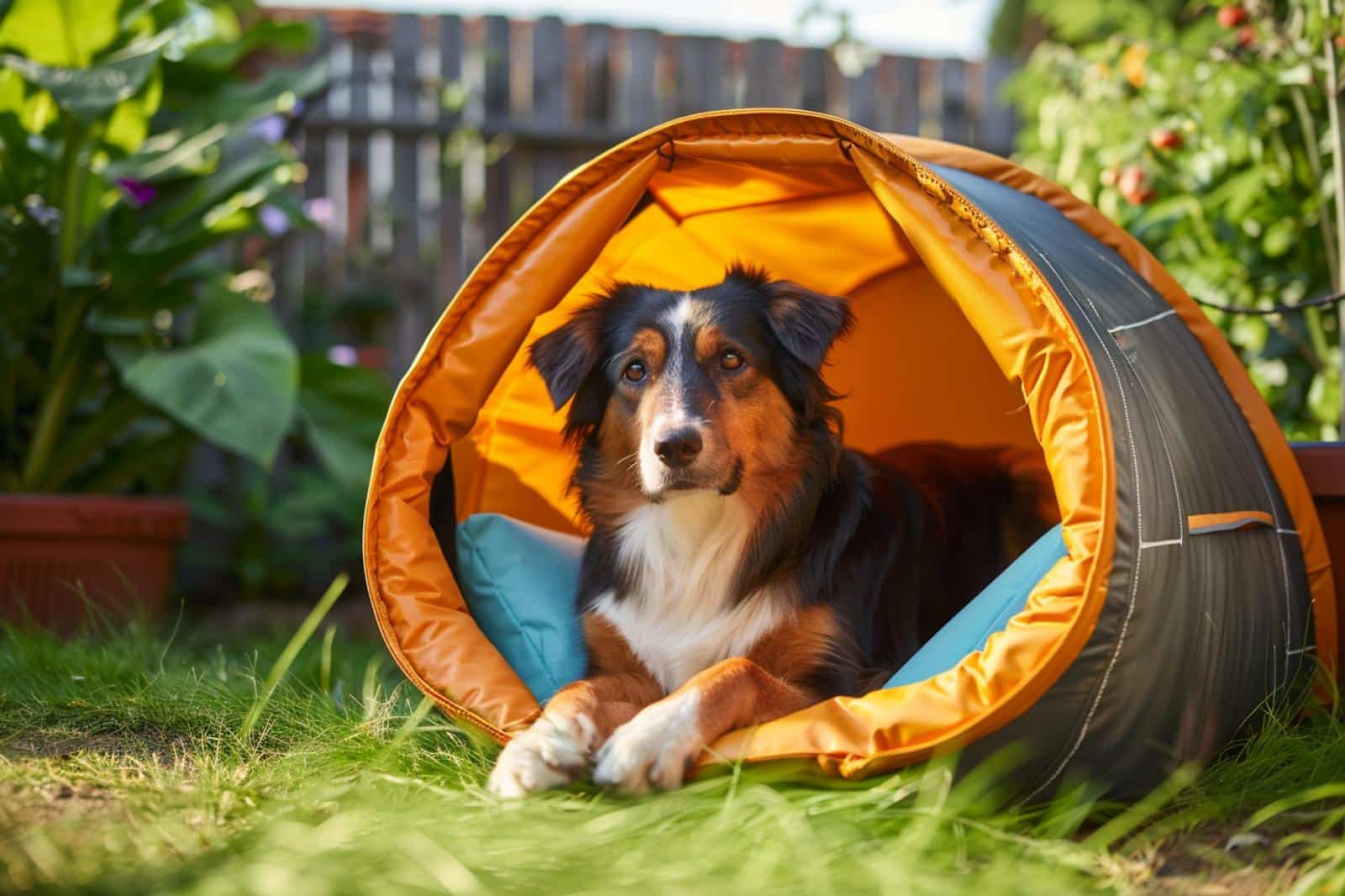How to Choose the Right Type of Outdoor Shelter for Your Pet in Various Weather Conditions?

As pet parents, you all understand the significance of providing your beloved animals with safe, comfortable, and weather-appropriate shelter. Whether you’re planning for a furry friend who spends most of their time outside or creating a cozy getaway spot, choosing the right type of outdoor shelter is crucial. This article will guide you in making well-informed decisions based on various weather conditions to ensure your pet’s comfort and safety.
Understanding Your Pet’s Shelter Needs
Before we jump into the different types of shelters and their suitability for various weather conditions, it’s essential to understand your pet’s specific needs. Different pets, their breeds, sizes, and even their personalities can influence the type of shelter that will best suit them.
A lire en complément : How to Set Up a Quarantine Tank for New or Sick Aquarium Fish?
Cats and dogs, for example, have distinct behaviors and preferences when it comes to their outdoor spaces. Cats often prefer elevated spaces where they can watch their surroundings, while dogs might require more ground-level spaces for exploration. Your pet’s size and fur thickness might also dictate the kind of insulation and size needed in a shelter.
Moreover, consider your pet’s age and health. Older pets or those with health issues might require more warmth and comfort compared to young and sprightly ones.
Sujet a lire : What Are the Best Practices for Safe Interaction Between Children and Pets?
Choosing the Right Shelter for Cold Weather
When temperatures dip, your pet’s outdoor shelter needs to provide warmth and protection from the elements.
For dogs, consider a well-insulated dog house. This could be made of wood or plastic, but should have a raised floor, slanted roof, and a door flap to keep out drafts. The size of the house should be large enough for your dog to move around comfortably but small enough to retain body heat.
Cats, on the other hand, might prefer a cozy cat condo with multiple levels. Make sure it’s well insulated and features a small entrance to keep out wind and snow.
For both dogs and cats, ensure the bedding is warm and dry. Straw is a common choice for insulation as it repels moisture. Avoid blankets or towels, which can absorb moisture and make the environment damp.
Opting for Suitable Protection in Hot Weather
As the mercury rises, it’s vital to keep your pets cool and prevent overheating.
Dog houses should be well-ventilated, with air vents or open spaces to allow air circulation. If the shelter is made of wood, make sure it’s light-colored to reflect heat. Consider a house with a removable roof for extra ventilation during extreme heat waves.
For cats, opt for a shaded cat tree or condo with plenty of ventilation. Ensure it’s out of direct sunlight, and if possible, choose one with a built-in cooling pad for those really hot days.
Always provide plenty of fresh water nearby, and consider investing in a pet-safe outdoor fan for extra cooling.
Adapting to Rainy and Windy Conditions
In case of rain or wind, your pet’s shelter should provide a dry, safe haven from the elements.
Dog houses should have a raised floor to prevent flooding, and a slanted roof to allow rain to run off. Door flaps or wind-blockers can keep out drafts and rain.
Cats, being the climbers they are, might appreciate a multi-level cat condo. Ensure it has a solid roof, raised floors, and is placed in a sheltered location to keep it from getting soaked or toppled over by winds.
Ensuring Safety During Natural Disasters
In regions prone to natural disasters like hurricanes, tornadoes, or earthquakes, additional safety precautions might be necessary.
Ensure the shelter is sturdy and well-anchored to resist heavy winds. If possible, place it in a location that’s protected from falling branches or debris. In the case of predicted severe weather, it’s best to bring your pet indoors if possible.
In conclusion, selecting the right outdoor shelter for your pet depends heavily on their specific needs and the prevailing weather conditions. By considering these factors and the recommendations above, you can provide your pet with a safe and comfortable outdoor sanctuary in any weather.
Providing the Right Shelter Accessories
After deciding the type of shelter for your pets, it’s equally important to equip it with appropriate accessories. These accessories will increase comfort and offer enhanced protection from weather conditions.
For dogs, consider adding a heated pet mat or a self-warming bed during cold periods. These items provide extra warmth and can help prevent hypothermia, especially in elderly or short-fur dog breeds. On the other hand, during hot periods, you can opt for a cooling mat or bed that helps to regulate your dog’s body temperature.
Moreover, installing a pet door can give your dog an easy access in and out of their house. Choose a design that’s easy to use, appropriately sized for your pet, and durable enough to withstand their weight and activity level.
For cats, a heated cat bed or perch can offer necessary warmth during cold weather. To offer a cool spot in summers, consider a cat tree made of breathable material like sisal or carpet. Also, a scratch post in the outdoor shelter can keep your cats entertained.
Regardless of the type of pet, always ensure that the shelter is kept clean. Regular cleaning prevents the buildup of dirt, moisture, and pests that might cause discomfort or health issues to your pets.
Conclusion: Creating a Comfortable Outdoor Haven for Your Pet
To sum up, providing a safe and comfortable outdoor shelter for your pet is not a one-size-fits-all approach. It requires understanding your pet’s specific needs, the local weather conditions, appropriate shelter designs, and necessary accessories.
Remember, colder climates call for well-insulated, cozy shelters with warm bedding and possibly heated accessories. On the other hand, hot climates require well-ventilated, shaded shelters with cooling measures in place. For rainy and windy conditions, ensure the shelters are waterproof, windproof, and elevated to avoid flooding. In regions prone to natural disasters, sturdiness and safety should be your primary concern.
By taking all these factors into account, you’ll be well-equipped to create an outdoor haven that ensures your pet’s comfort, safety, and happiness in any weather condition. Your furry friend will certainly appreciate your thoughtful efforts to make their outdoor experience enjoyable and secure.
